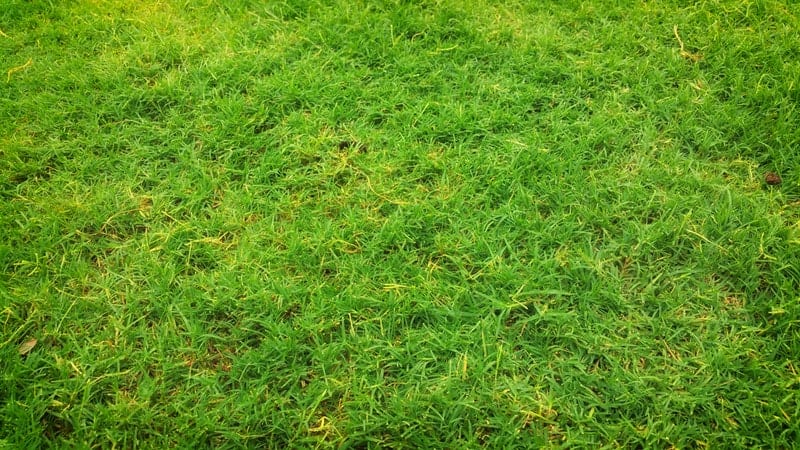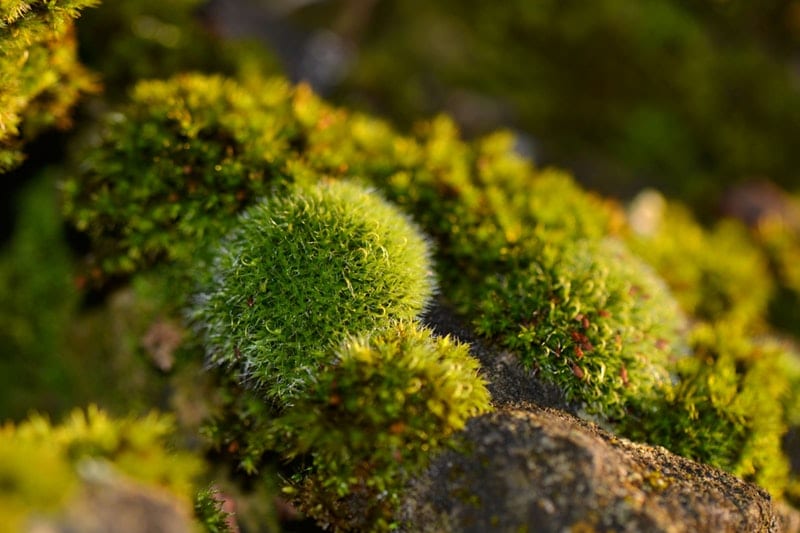Last updated on October 23rd, 2023 at 08:53 pm

Lawn care is one of the central issues in keeping the lawn healthy and strong. If the lawn lacks certain minerals or is not in good condition, it quickly loses its bright green color. In addition, bare patches appear more frequently and weeds can spread.
For a healthy lawn, however, not only the right fertilizing, lawn mowing, or watering is necessary. Did you know that a soil can benefit from the addition of lime and the lawn can develop better?
If the topic of lime was also unknown to you, then the following article will help you get a complete overview of the topic of lawn lime.
When is it necessary to lime the lawn and what are the best means?
The answers for optimal lawn health through lime you will learn in this guide.
Contents
- 1 When to limewash the lawn
- 2 Reasons why the lawn is too acidic
- 3 How to test the pH value
- 4 How to limewash the lawn correctly
- 5 Dosing the lime correctly
- 6 Which lawn lime is the right one?
- 7 What must be considered when liming the lawn
- 8 Can the lawn be limed even when it rains?
- 9 When should fertilizing begin again?
- 10 How often should liming be repeated?
- 11 Author
When to limewash the lawn

Every lawn should be mowed regularly and the application of a fertilizer is also advisable in any case. But which soil actually benefits from lime and does every lawn need to be treated with lime?
The answer to the latter question is simple. No, not every lawn needs to be treated with additional lime. Whereas some soils benefit from lime, in other soil conditions there is no reason to provide the soil with additional lime.
Whether a soil needs to be treated with lime depends mainly on the pH value. This makes a statement about which milieu prevails in the soil. You may still be familiar with this from your chemistry lessons. For example, the soil may be too acidic and have too low a pH value.
A neutral soil shows a pH value of 7. If the pH is above this value, then the soil is said to be “alkaline”. Anything below this value is called acidic soil. Both upward and downward swings should be avoided.
An optimal soil has a pH of 5.5 to 6. Within these values, the lawn and plants can grow best.
If the pH value is below this value, then various deficiency symptoms can occur. As a result, moss can spread and crowd out the lawn.
On the other hand, the situation is different if the soil is rather alkaline. Here, problems with clover in the lawn can often be observed. The clover also displaces the lawn here and is therefore to be considered a weed.
So our goal now is to achieve the perfect pH value. With the help of lime, the pH value can be influenced upwards. If the pH value is 4, then the application of the lime is expressly desired.
The situation is different, however, if the pH value is too high. Here, the lime has the effect that the pH value would be raised further. Thus, if a pH of 7 is present, then lime should not be used under any circumstances.
However, the presence of clover or moss is not a sufficient indication of whether the soil is too acidic, or alkaline. To be sure, you should always perform a soil test.
Reasons why the lawn is too acidic
If you suspect that your soil is too alkaline, then the lime will not help you and you will have to take other measures.
But what are the reasons that the soil is too acidic and how can you prevent this condition?
One of the main reasons soils are too acidic is because of your mowing habits. If you leave mowing residue behind from time to time, it will rot on your lawn. In this process, organic acids occur and penetrate the soil.
If the soil is compacted and can’t handle the acid properly, then over time the acidity in the soil will increase.
So, to prevent soils from becoming increasingly acidic, you must ensure that sufficient oxygen is supplied. Using the oxygen, decay processes do not take place and the soil does not absorb acid.
Therefore, you should keep the lawn both free of manure residues, and in the fall, clear it of leaves. In this way, the lawn and the soil will have enough room to breathe and decay processes will take place only to a limited extent.
If you have a compacted soil, then you should additionally sand the lawn. This is because lime is not a long-term solution, but mainly helps in the short term to raise the pH to a healthy level.
Therefore, for a long-term solution, you should apply sand in the spring. The sand layer should be about two to three inches high. The sand will then soak into the soil and loosen it up.
Keep in mind, however, that this is a very long-term process. For example, it may take several years for the soil to return to the optimum pH range. Within this period, you should introduce additional lime.
How to test the pH value
Moss is only an indicator that the pH is too low. However, it is not proof that liming the lawn should actually be done. After all, there are other reasons that moss could occur.
However, to be completely sure that the soil is too acidic, you do not need to be a chemist. There are already very simple testers available at specialty stores that you can use to determine if your soil is too acidic.
The application depends on the tester you use, but in most cases it should be self-explanatory. Normally, however, it is enough to take several soil samples from several places in your soil and check them with the soil tester. Whether the soil is too acidic will then be indicated to you by a color scale.
Moreover, the test does not take long and is already completed in a very short time. So you get a quick result about whether you need to lime the soil.
How to limewash the lawn correctly
If you have determined that your soil is too acidic and you urgently need to provide it with lime, then you should pay attention to a few things. Because even though applying the lime is not exactly complicated, there are still some other requirements that should be taken into account.
For example, if you want to scarify the ground, then you should wait a little while with the lawn lime. After dethatching, the soil needs about four weeks to recover from the dethatching.
Only after these four weeks should you apply the lawn lime.
You can then apply the lime to the lawn either by hand or with a spreader. When applying the lime, you should wear gloves under all circumstances. This is because the lime can also attack human skin, causing skin irritation.
How much lime you need depends on the type of soil you have.
Light or sandy soils require much less lime than, for example, heavy and clayey soils.
After the lime has been applied, the soil should still be worked with a rake. This has the advantage that the lime can penetrate better into the soil. It also has the advantage that the lime is not carried away by gusts of wind.
However, if working with the rake is too laborious, then alternatively extensive watering can be done. Watering also helps the lime to seep into the soil.
After tilling, the lawn should be given a rest period of about 4 weeks. This time is necessary for the lawn to absorb the lime and regain an optimal pH level.
The best time to lime the lawn is in the spring, before the lawn season starts again.
Dosing the lime correctly
Applying the lime not really difficult. However, by hand, it can result in uneven lime application to the soil. These uneven results can lead to deterioration of the soil.
Therefore, it is better to apply the lawn lime with a spreader truck. Spreading carts are universal and can also be used for other means.
Therefore, a spreader cart should also be used when seeding the lawn and should be part of any good lawn equipment.
Which lawn lime is the right one?
If you are simply looking for lime, then you will be offered various means. However, specialty retailers should list the appropriate agent under “garden lime.”
Usually, the lime is offered in a mixture together with a fertilizer. If your lawn is not too extremely acidic, then you can resort to such a standard product without hesitation.
The advantage is, of course, that you do not have to use an extra lawn fertilizer.
If you want a particularly strong lawn, which has a lush green, then you should reach for a lawn lime, which also contains magnesium.
What must be considered when liming the lawn
The process of liming is essentially not a complicated process. However, in conclusion, tips should be given on how to perfectly limewash the lawn and what you should avoid.
Can the lawn be limed even when it rains?
For liming, the soil should be dry. So, it is not recommended to liming the lawn when it is raining. On the other hand, it has already been pointed out that watering after liming can be quite beneficial.
Therefore, it is not a problem if it rains after liming. On the contrary, the rain actually helps the lime to sink into the soil better and be absorbed by it. So if it rains after you apply the lime, then you should not worry.
When should fertilizing begin again?
Spring can be an exciting time for the lawn. So when should you do the dethatching, reseeding and liming?
The order here is that dethatching should be done first if you feel it is necessary. After that, reseeding can also be done directly into the ground.
After scarifying, however, a waiting period of four weeks is advisable. Only after these four weeks should the lime now be introduced.
After liming, a rest period of three to four weeks is again advisable.
However, this period always depends on the individual capabilities of your lawn. Some lawns are very hard-wearing and can cope with the application of the lime earlier.
How often should liming be repeated?
If you are concerned that your lawn is too acidic, then treating it with lime is a good idea. Moreover, the good thing about this process is that it needs to be repeated very rarely.
At least one season should pass between liming the lawn and not applying lime. This is the time the soil needs to absorb the lime.
Whether it is necessary to re-lime depends on the results. If they are still not satisfactory after a year, then conduct new soil tests. If the soil is still too acidic, then lime it the following season. However, there should always be a period of one season between lime treatments in which no lime is applied.


